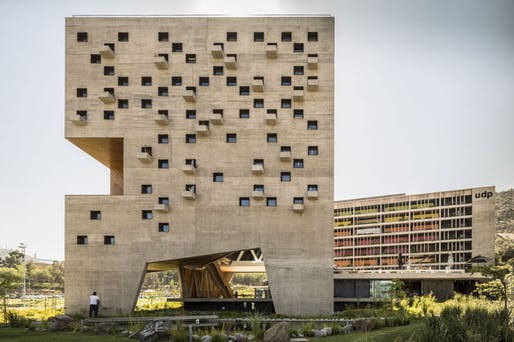
Cement is everywhere, but few people notice the impact it has on the environment. A standard building material used everywhere it is often confused with concrete. Cement is a key component in making concrete.
By burning limestone at extremely high temperatures, this process turns the stone into a fine powder that’s then mixed with clay and other minerals.
This powder material, called clinker, is mixed together with other materials to create concrete. Despite its inexpensive and readily available supply, cement production is responsible for high levels of carbon dioxide emissions surpassing the emissions produced from trucks.
Thanks to Vanessa Dezem’s Bloomberg piece, we learn why cement is so hazardous to the environment and what solutions have been made by manufacturers to help alleviate its hazardous output. The science behind cement and why architecture and construction industries have not converted to a sustainable solution comes down to one thing, cost.
Like most things, architects and developers have the intent to use the most efficient building materials possible to complete each project. However, what defines “efficient” is where the issue lies. In this case, efficient translates to cheaper materials that get the job done, but have horrible environmental effects.
According to Dezem, “Cement makers are responding but have found customers hesitant. LafargeHolcim, the second-largest maker by capacity, once launched a carbon-free product. It was more expensive and used a different production process. Customers were “very price sensitive” and didn’t show interest, Jens Diebold (head of sustainability at LafargeHolcim) said. Buyers acknowledge that cost is crucial.”
Many architects have begun to focus on the sustainable practices that go into building their projects, “many forget about the materials supporting the structure that embody the biggest share of its lifetime carbon footprint” Dezem explains. “Cement’s contribution to emissions is especially immense because of the chemical process required to make it.”
One could argue that factoring in high costs of better cement solutions is possible. However, most greener forms of the material can cost three times the amount of its cheaper cement counterparts. For example, Portland cement, the most commonly used cement mix costs about $51per tonne. The cost of an alternative material called geopolymer cement can cost up to $161 per tonne.
Efficient and sustainable cement alternatives do exist, but, the motivation for construction companies and developers to adopt greener building materials is slow and staggering in application. Some countries are unable to access alternative options, and government policies are slow to adopt a higher priority for greener building initiatives.
- An Architect report











